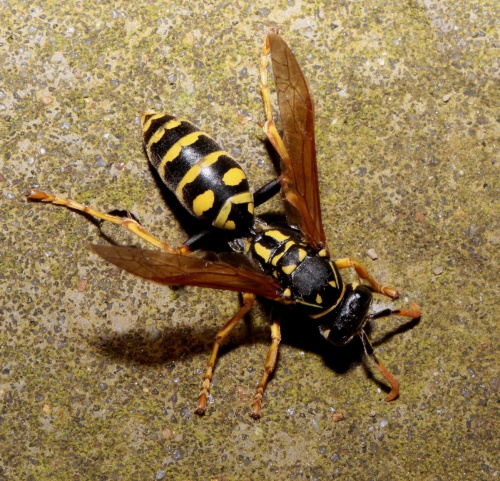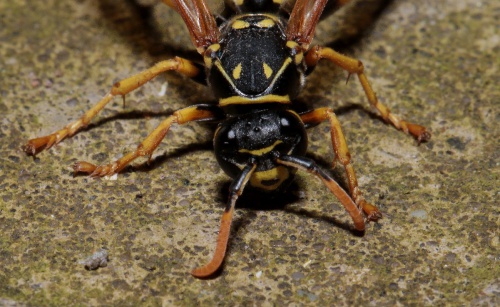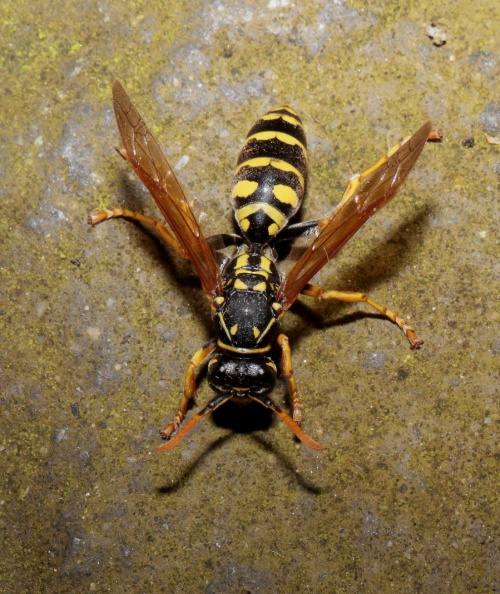European Paper Wasp - Polistes dominula
The appearance falls between that of a true social (yellowjacket) wasp and a mason wasp, with males having the hooked antennal tips of mason wasps. However, the behaviour is social with differentiated workers serving a single queen, though queens, workers and males all look remarkably similar in the field.
Structures such as outhouses and bridges where it often builds it's nest
Most likely to be encountered when nest building (see Life History below).
Nests are constructed of wood pulp with the hexagonal cells arranged in a round cluster rather than in flat combs, and there is no outer casing to the nest. Nests are often suspended from the ceilings of outhouses and bridges. Workers will defend their nests vigorously. If the queen dies, one of the workers can apparently assume that role (unlike true social wasps). Nest cells are stocked with insect prey of many sorts. Adults will also visit a wide variety of flowers.
P. dominula is resident in the Channel Islands but seemingly just a transient visitor on the British mainland where nesting has been reported on a number of occasions but no permanent populations seem to exist.
There are reports of one or two Polistes dominula nests being noted in Leicestershire and Rutland, but it is a rare visitor to our region. The Magna Park record probably came over with a shipment of goods from Europe.
Leicestershire & Rutland Map
Enter a town or village to see local records
MAP KEY:
Yellow squares = NBN records (all known data)
Coloured circles = NatureSpot records: 2020+ | 2015-2019 | pre-2015
UK Map
Species profile
- Species group:
- Bees, Wasps, Ants
- Kingdom:
- Animalia
- Order:
- Hymenoptera
- Family:
- Vespidae
- Records on NatureSpot:
- 1
- First record:
- 18/02/2019 (Mabbett, Craig)
- Last record:
- 18/02/2019 (Mabbett, Craig)
Total records by month
% of records within its species group
10km squares with records
The latest images and records displayed below include those awaiting verification checks so we cannot guarantee that every identification is correct. Once accepted, the record displays a green tick.
In the Latest Records section, click on the header to sort A-Z, and again to sort Z-A. Use the header boxes to filter the list.




